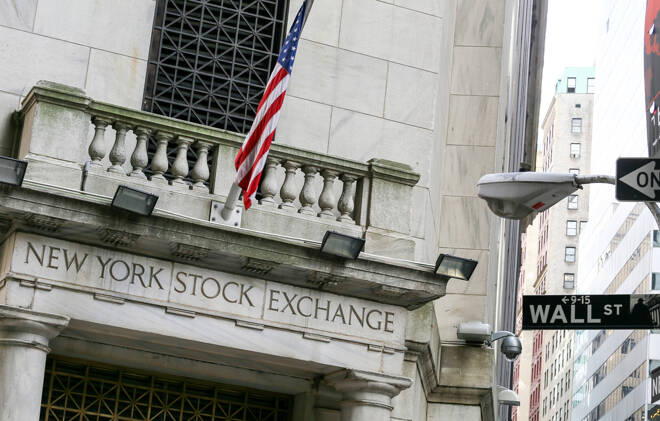Advertisement
Advertisement
AutoZone Tops Q2 Earnings Estimates; Stock Has Over 15% Upside Potential
By:
Memphis, Tennessee-based auto parts retailer AutoZone reported better-than-expected earnings in the second quarter, largely driven by government stimulus and recovery in consumer demand from the COVID-19 pandemic slump, sending its shares up over 1% on Tuesday.
Memphis, Tennessee-based auto parts retailer AutoZone reported better-than-expected earnings in the second quarter, largely driven by government stimulus and recovery in consumer demand from the COVID-19 pandemic slump, sending its shares up over 1% on Tuesday.
The United States’ leading retailer and a leading distributor of automotive replacement parts and accessories reported quarterly adjusted earnings of $14.93 per share for the quarter ended in February, beating Wall Street consensus estimates of $13.07 per share.
The auto parts retailer’s revenue surged more than 15% to $2.91 billion from a year ago, higher than the market expectations of $2.76 billion.
Following this upbeat result, AutoZone shares rose 1.35% to $1185.17 on Tuesday.
“AutoZone’ (AZO) comps were 15.2%, significantly better than consensus of 8.2% and our upwardly revised estimate of 10%. This was better than both O’Reilly’s and Advance Auto Part’s most recent quarterly comps of 11.2% and 4.7%. This makes sense as AZO’s quarter ended in mid-February, and thus included what we think was a very strong month of January for the industry as a whole,” noted Michael Baker, senior research analyst at D.A. Davidson.
“The others had quarter ends at the end of December and will thus see this benefit next quarter. Nonetheless, AZO’s beat should be viewed positively relative to estimates, and we maintain our BUY rating.”
AutoZone Stock Price Forecast
Seven analysts who offered stock ratings for AutoZone in the last three months forecast the average price in 12 months of $1,370.00 with a high forecast of $1,565.00 and a low forecast of $1,206.00.
The average price target represents a 16.10% increase from the last price of $1,180.06. From those seven analysts, six rated “Buy”, one rated “Hold” and none rated “Sell”, according to Tipranks.
Morgan Stanley gave the base target price of $1,505 with a high of $1,980 under a bull scenario and $1,000 under the worst-case scenario. The firm gave an “Overweight” rating on the leading auto parts retailer’s stock.
“Top- and bottom-line growth is still near record highs but decelerating (as expected). Strong FQ2 results in absolute terms but enough to pick at (weak GM) to leave the sector’s debate unresolved. We like AutoZone (AZO) as an inexpensive LT compounder but the stock could remain stuck in neutral in the NT,” said Simeon Gutman, equity analyst at Morgan Stanley.
Several other analysts have also updated their stock outlook. Jefferies raised the target price to $1,455 from $1,325. Credit Suisse upped the target price to $1,437 from $1300. RBC increased the price objective to $1269 from $1190.
Moreover, Goldman Sachs lowered the target price to $1206 from $1265. Stephens cut the target price to $1,350 from $1,420. D.A. Davidson slashed the target price to $1,355 from $1,400.
Analyst Comments
“AutoZone (AZO) is our top pick in DIY Auto. We see it as a high-quality retailer with the ability to compound earnings/FCF growth over time. While not immune to a tougher macro backdrop (fewer miles driven), we believe AZO is best positioned through any recession given its leading exposure to the more defensive DIY segment (80% of sales),” Morgan Stanley’s Gutman added.
“In addition, its DIFM growth was accelerating pre-COVID and we think it can gain more share in that segment going forward. In our view, ongoing share gains coupled with solid expense management should allow AZO to overcome headwinds from less driving in the near- to medium-term.”
Upside and Downside Risks
Risks to Upside: Longer than expected industry shift towards DIY; share gains in both DIY and DIFM segments. A shift to DIY insulates gross margin headwinds. Tapering of investments/higher expense growth- highlighted by Morgan Stanley.
Risks to Downside: Less than expected share gain amid a recession. Greater than expected margin pressure due to rising expenses and ongoing investments. Increasing e-commerce penetration in the DIY market.
Check out FX Empire’s earnings calendar
About the Author
Vivek Kumarauthor
Vivek has over five years of experience in working for the financial market as a strategist and economist.
Advertisement
